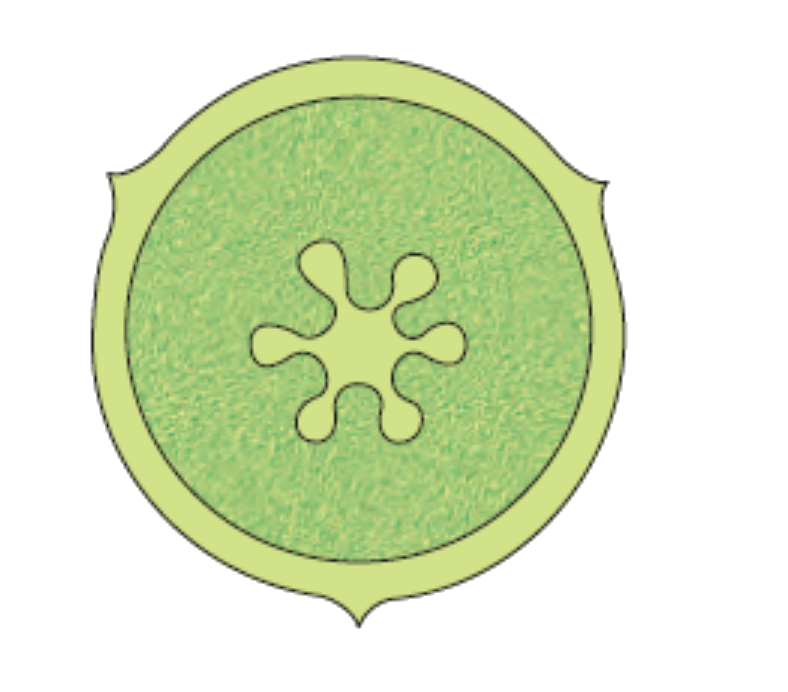Placentation in Dianthus is
Axile
Free central
Marginal
Parietal
The correct Answer is:B
Step-by-Step Solution:
1. Understanding Placentation: Placentation refers to the arrangement of ovules within the ovary of a flower. It is important to identify the type of placentation to understand the reproductive structure of the plant.
2. Identifying Types of Placentation: The options provided are:
- Axile
- Free Central
- Marginal
- Parietal
3. Analyzing Each Type:
- Marginal Placentation: Found in plants like peas, where ovules are attached along the margins of the ovary.
- Axile Placentation: Found in plants like lemon and tomato, where ovules are arranged around a central axis.
- Parietal Placentation: Ovules are attached to the walls of a single-chambered ovary.
- Free Central Placentation: Ovules are attached to a central column of tissue, with no septa dividing the ovary into locules.
4. Specifics of Dianthus: In the case of Dianthus, the ovules are arranged in a way that they are attached to a central column of tissue, which characterizes free central placentation. The ovary wall surrounds the ovules, and there are no partitions (septa) dividing the ovary into separate chambers.
5. Conclusion: Based on the analysis, the correct answer to the question "Placentation in Dianthus is" is Free Central.
---
- Axile
- Free Central
- Marginal
- Parietal
- Marginal Placentation: Found in plants like peas, where ovules are attached along the margins of the ovary.
- Axile Placentation: Found in plants like lemon and tomato, where ovules are arranged around a central axis.
- Parietal Placentation: Ovules are attached to the walls of a single-chambered ovary.
- Free Central Placentation: Ovules are attached to a central column of tissue, with no septa dividing the ovary into locules.
Topper's Solved these Questions
- MORPHOLOGY OF FLOWERING PLANTS BOOK - AAKASH SERIESCHAPTER - MORPHOLOGY OF FLOWERING PLANTS EXERCISE - EXERCISE - I (Fruit)
66 Videos
- MORPHOLOGY OF FLOWERING PLANTS BOOK - AAKASH SERIESCHAPTER - MORPHOLOGY OF FLOWERING PLANTS EXERCISE - EXERCISE - II
103 Videos
- MORPHOLOGY OF FLOWERING PLANTS BOOK - AAKASH SERIESCHAPTER - MORPHOLOGY OF FLOWERING PLANTS EXERCISE - EXERCISE - III (Previous AIPMT/NEET Questions)
41 Videos
- MICROBES IN HUMAN WELFARE BOOK - AAKASH SERIESCHAPTER - MICROBES IN HUMAN WELFARE EXERCISE - EXERCISE-III (Previous AIPMT/NEET Questions)
25 Videos
- REPRODUCTION IN ORGANISMSBOOK - AAKASH SERIESCHAPTER - REPRODUCTION IN ORGANISMSEXERCISE - Exercise-III (previous AIPMT/NEET Questions)
19 Videos
Similar Questions
Which one of the following diagrams represents the placentation in Dianthus
View SolutionRead the following matches regarding the placentation :
(i) Dianthus - Free central
(ii) Cannabis - Marginal
(iii) Sunflower - Basal
(iv) Cucurbita - Axile
Which of these are correct ?
View SolutionPlacentation in pea, bean is :-
View SolutionThe type of placentation shown in the given diagram is

View SolutionWhat type of placentation is seen in the members of family Fabaceae ?
View SolutionAssertion :- In basal placentation ovary is unilocular.
Reaon :- Basal placentation is found in sunflower.
View SolutionPlacentation in tomato and lemon is
View SolutionPlacentation in Brassicaceae (mustard) family is
View SolutionPlacentation is parietal in the ovary of
View SolutionThe type of placentation that occurs in sunflower is
View Solution
